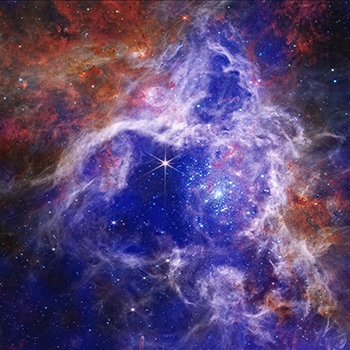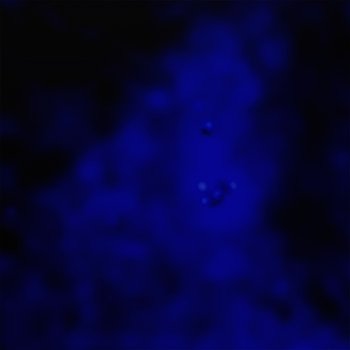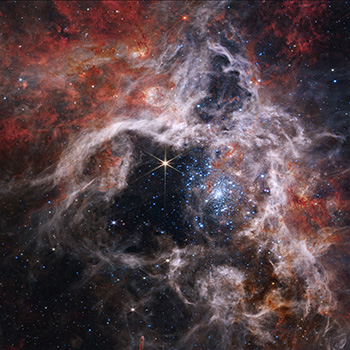
30 Doradus (30 Dor) Sonification
30 Doradus, one of the largest and brightest regions of star formation close to the Milky Way. This sonification again combines X-rays from Chandra with infrared data from Webb. As the scan moves from left to right across the image, the volume heard again corresponds to the brightness seen. Light toward the top of the image is mapped to higher pitched notes. X-rays from Chandra, which reveal gas that has been superheated by shock waves generated by the winds from massive stars, are heard as airy synthesizer sounds. Meanwhile, Webb’s infrared data show cooler gas that provides the raw ingredients for future stars. These data are mapped to a range of sounds including soft, low musical pitches (red regions), a wind-like sound (white regions), piano-like synthesizer notes indicating very bright stars, and a rain-stick sound for stars in a central cluster.
Access more information & file formats on this sonification
The Chandra sonifications were led by the Chandra X-ray Center (CXC), with input from NASA's Universe of Learning. The sustained collaboration was driven by visualization scientist Dr. Kimberly Arcand (CXC), astrophysicist Dr. Matt Russo and musician Andrew Santaguida (both of the SYSTEM Sounds project). For other sonifications, please see their linked pages.
cxcpub@cfa.harvard.edu
617-496-7941
60 Garden Street,
Cambridge, MA 02138 USA
Art Direction/Design: Kristin DiVona
Web Developers: Khajag Mgrdichian
& Kelly T.S. Williamson
Chandra X-ray Center, Operated for NASA by the Smithsonian Astrophysical Observatory. This site was developed with funding from NASA under contract NAS8-03060 | Privacy | Accessibility
Additional support from NASA's Universe of Learning (UoL). UoL materials are based upon work supported by NASA under award number NNX16AC65A to the Space
Telescope Science Institute, working in partnership with Caltech/IPAC, Jet Propulsion Laboratory, and Smithsonian Astrophysical Observatory.



